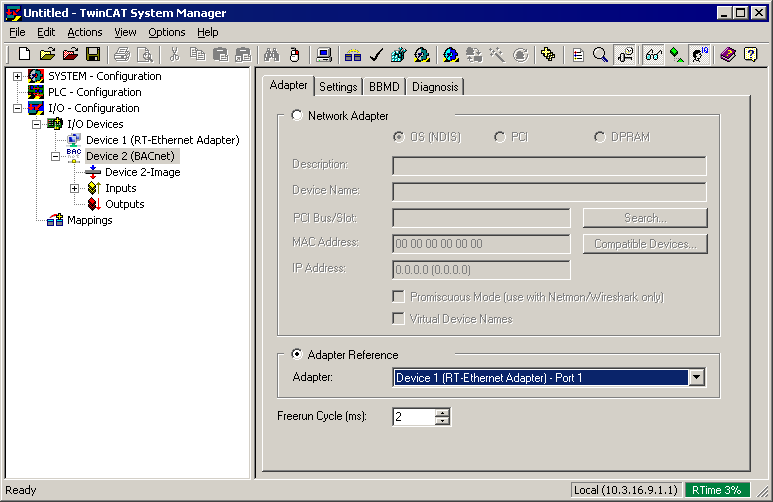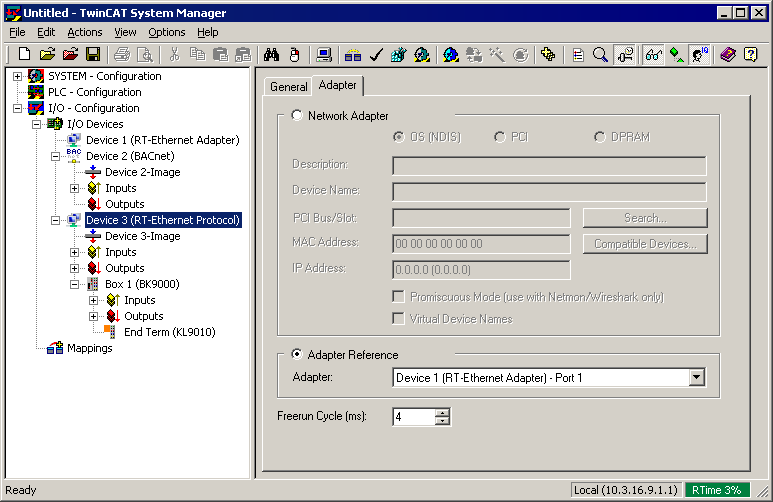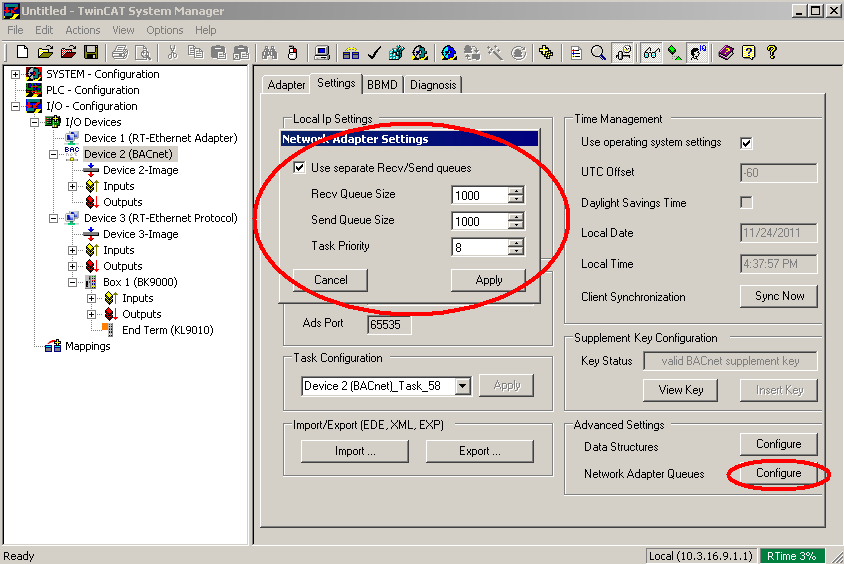Example: Operating BACnet and BK90XX via an Ethernet interface
This section explains how a BACnet device can be operated in parallel with one or several BK90XX ( real-time Ethernet ) via an Ethernet interface.
First, a real-time Ethernet adapter (multi-protocol handler) is created and linked with the required Ethernet interface:

Then a BACnet device is created and used as Ethernet adapter Port 1 for the multi-protocol handler:

The procedure for the real-time Ethernet protocol is similar:

BACnet and real-time Ethernet can now be operated in parallel via the same Ethernet interface. ( e.g. scanning in of devices etc. )
If the real-time Ethernet protocol device is not controlled via BACnet but through synchronous mapping from a PLC, for example, the network queues must be activated in the BACnet device. The reason is that internal BACnet functions can only be called up via the BACnet task. Synchronous mapping of the real-time Ethernet protocol device results in BACnet being called up in the context of the linked task. In this case the network queues decouple internal BACnet functions from this task.
The network queues can be activated in the "Settings" dialog of the BACnet device:

The procedure described here can also be used for configuring several BACnet servers (devices) on a network interface. For each BACnet server a BACnet device must be created and linked with the port of the multi-protocol handler. In this way several BACnet servers can be operated in parallel - the IP address then must be adapted for each associated BACnet device, since the BACnet servers are distinguished through the IP address.